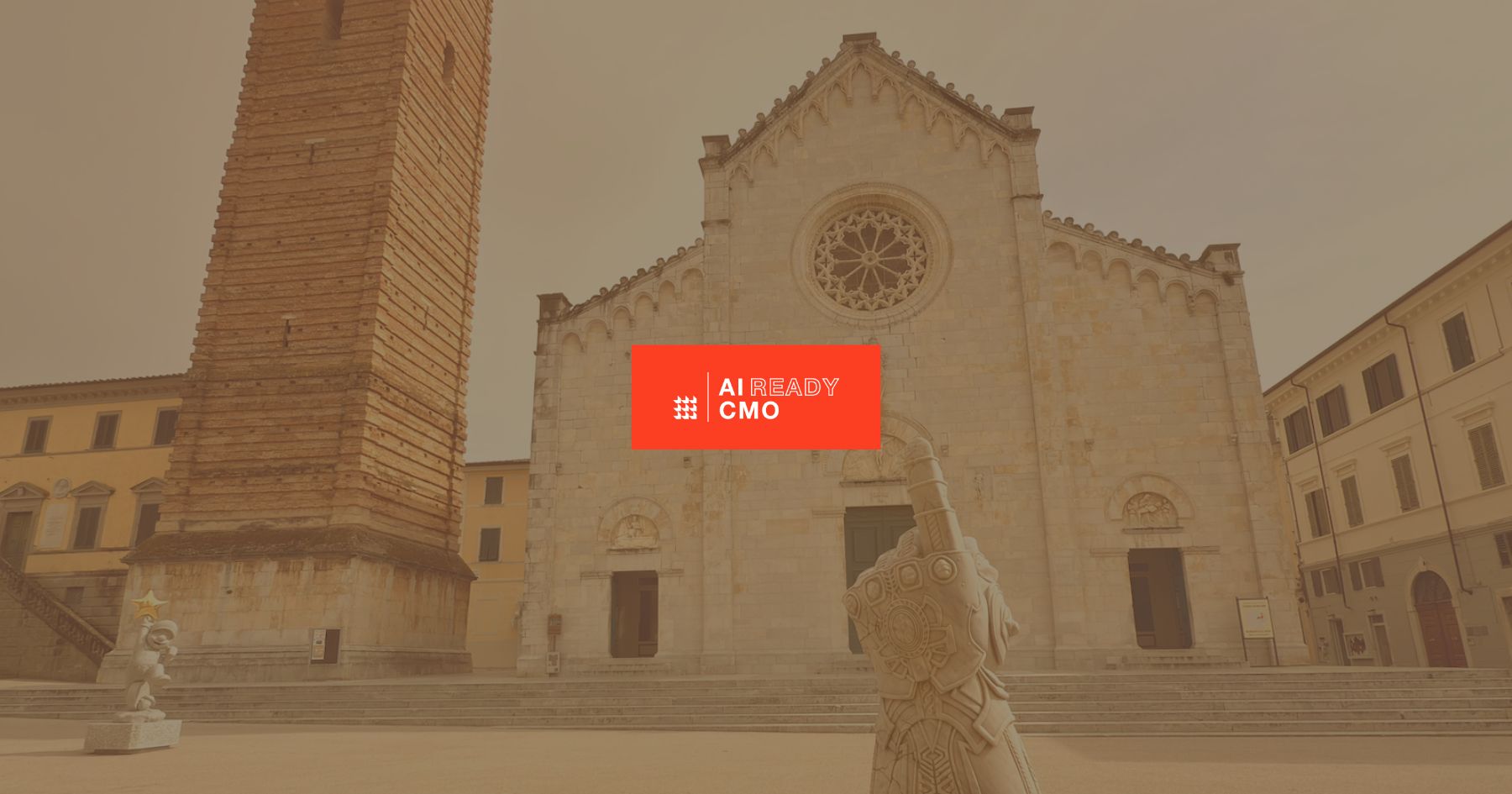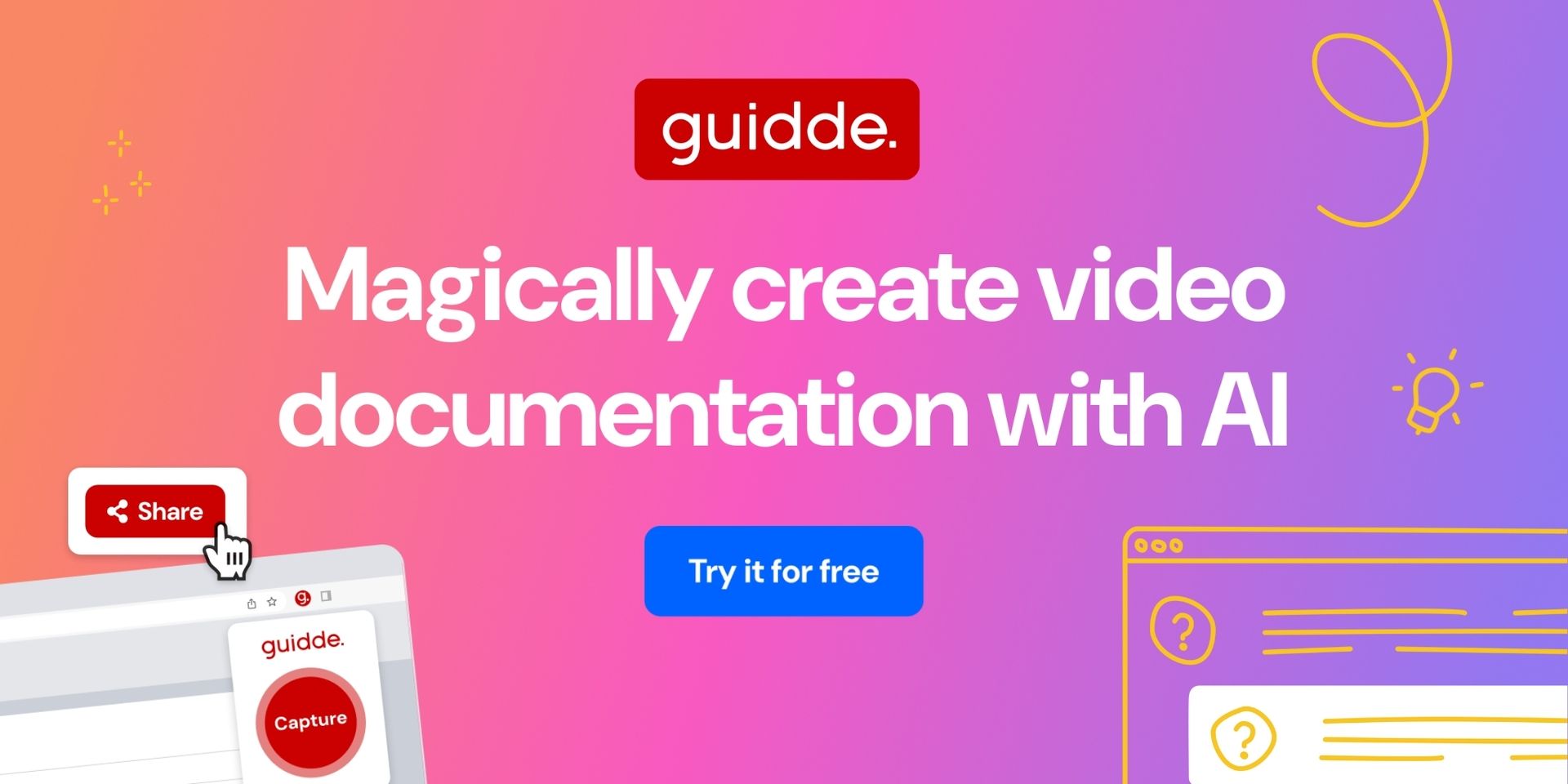This is a 4-part series on how to produce content with AI that people actually remember.
This is Part 1 - The crisis in taste and why AI might make it worse.
PRO MEMBERS: Scroll down to the bottom for pro membership access links.
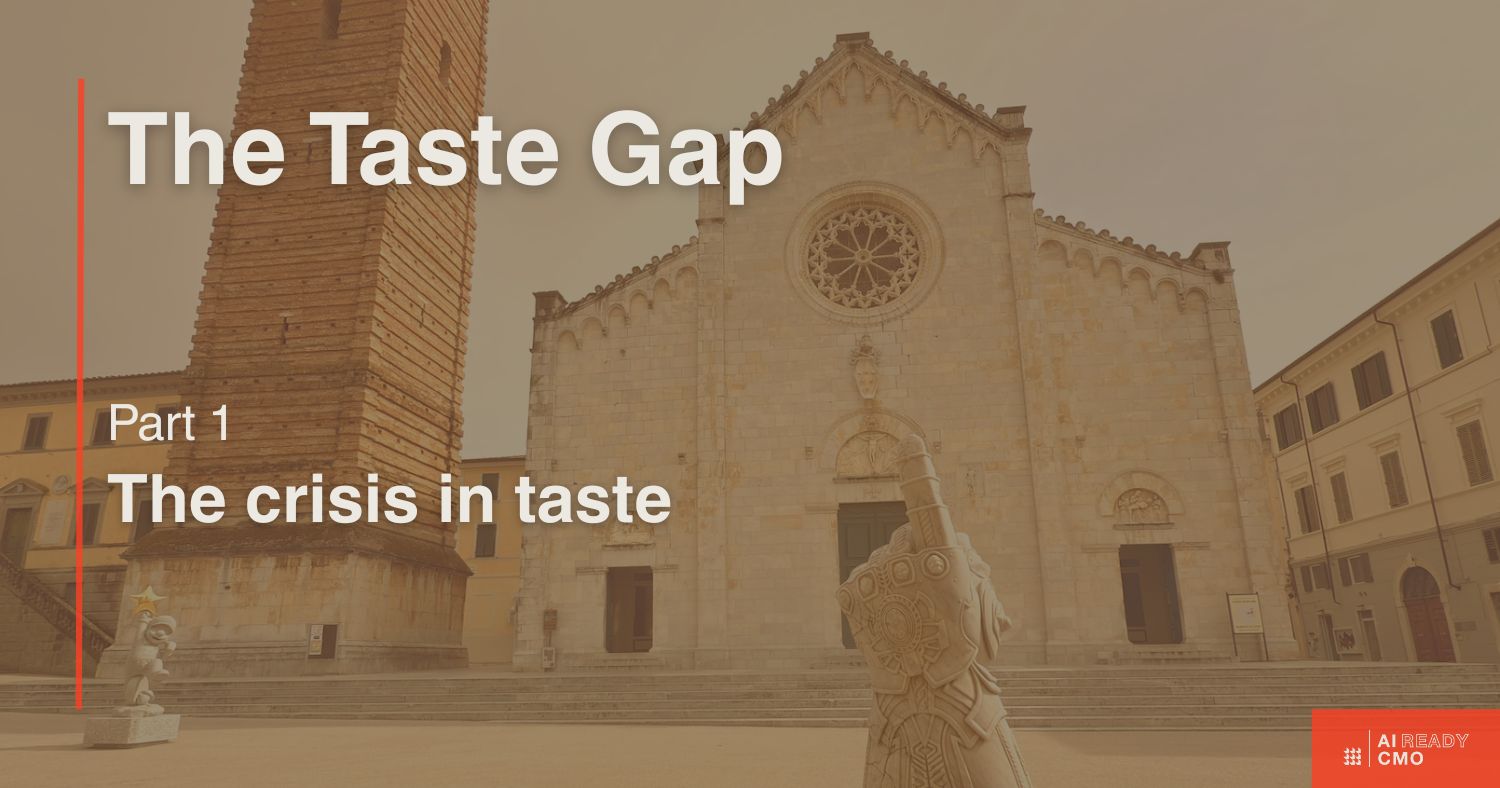
Pull up the last 20 pieces of content your brand shipped.
Remove the logos. Strip the brand names. Put them in a folder. Now look at them honestly: Can you tell they're from YOUR company—and not from your competitors or just some generic company in your industry?
If you hesitated—even for a second—your brand is dissolving. And AI is about to make it 10x worse.
We call this the taste gap. It's the chasm between the ease of mass-producing bland, uniform content at scale on one side—and the difficulty of creating emotionally resonant, distinctive content that people actually remember on the other.
Since 2023, AI has multiplied creative output by 100x, making this problem no longer theoretical but existential. Every campaign looks the same. Every color is a gradient. Every brand has the same message. Every piece of content reads like it came from the same template.
It's not that we, marketers, don't have taste (although we could argue around that too, to be honest). It's that performance marketing culture that has turned content production into an industrial process, optimized for volume over voice.
This series seeks answers on how to return to an era when campaigns were crafted like artifacts, brands were created like movements, and content creation was closer to art than sales.
Because with AI, we're at a crossroads: flood the world with meaningless, bland, sterile slop—or generate the most beautiful things marketing and advertising have ever created—your choice.
But first, you need to understand what we lost.
What is taste, anyway?
Before we diagnose the crisis, let's clarify what we mean by "taste." Because it's not what most people think.
Taste is NOT:
Following design trends
Knowing what's "on brand"
Having strong opinions about fonts
Liking expensive things
Being a snob about aesthetics
Taste IS:
The ability to discern quality from mediocrity—and articulate why
Understanding how craft creates emotion—why certain typography feels premium, why certain color combinations create tension, why certain copy rhythms land
Having a point of view—knowing what you are, and more importantly, what you're not
Knowing what to say no to—taste is as much about restraint as it is about execution
Let's make this concrete with examples you can see right now:
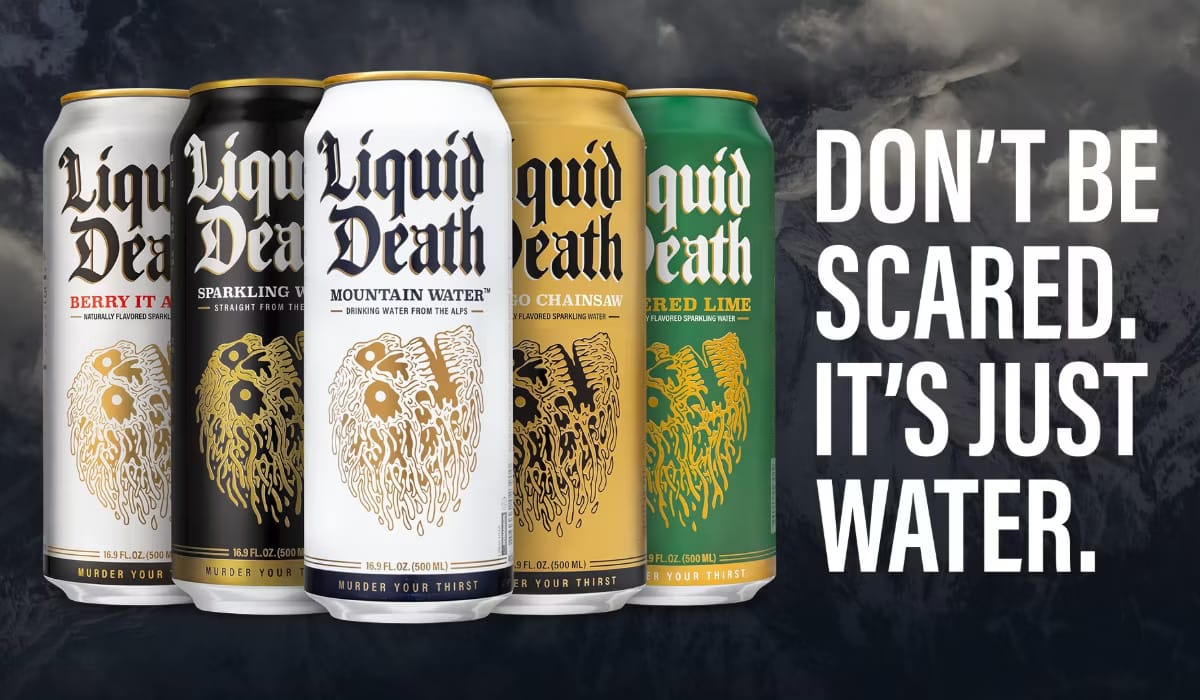
Why does Liquid Death's skull logo work when 1,000 other skull logos feel cheesy? Google "skull logo." You'll find thousands. Most feel like cheap gas-station t-shirts. Liquid Death doesn't. Why?
Because it's executed with craft. The line weight is consistent—no awkward thick-to-thin transitions that scream "I used auto-trace in Illustrator." The style references punk rock album covers and heavy metal aesthetics with precision, not approximation. It's not trying to be "edgy skull logo but also corporate-friendly." It commits fully to the bit.
Look closer: clean vectors, proper negative space, scalable across sizes from a can to a billboard without losing clarity. The typography pairing is equally committed—bold, condensed, aggressive. Nothing soft. Nothing hedged. But more importantly, it signals a brand that knows exactly what it is. Death metal aesthetic for water. Not death metal-lite. Not death metal with safety rails for Target. Just full commitment to an aesthetic that shouldn't work for bottled water—but does, precisely because of that commitment. That's taste: craft, point of view, and commitment.
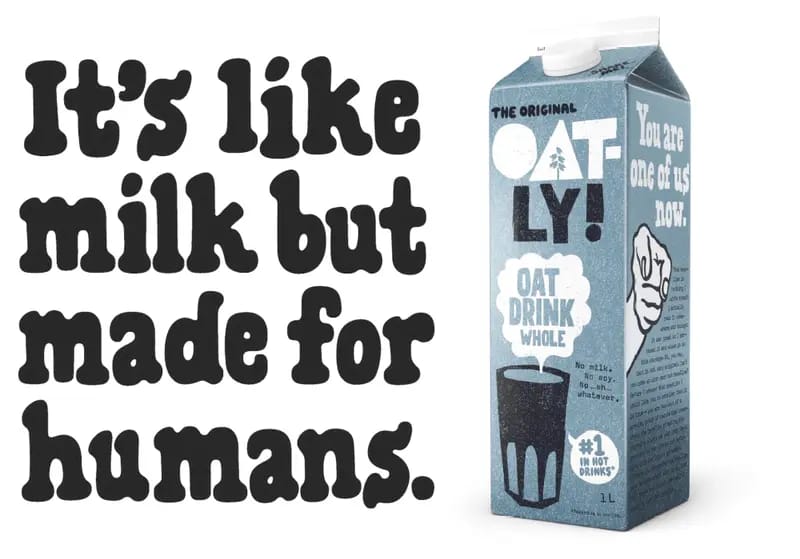
Why does Oatly's weird copy feel charming when other brands' weird copy feels try-hard? "It's like milk but made for humans." That line shouldn't work. It's weird. It's slightly insulting to dairy farmers. It's not "safe" corporate copy. But it's pure Oatly—Swedish directness meets cheeky environmentalism. Their packaging has paragraph-length manifestos in 8pt type. Their taglines are conversational and sometimes absurd: "Wow, no cow!" Their tone never breaks: always self-aware, never corporate, occasionally ridiculous.
Bad "quirky" copy tries to be weird while still playing it safe. It adds an emoji or a "hey there!" but keeps all the corporate hedging: "Our innovative solution leverages cutting-edge technology to empower teams! 🚀" Oatly chose a lane—conversational, slightly absurd, environmentally conscious without being preachy—and stayed in it consistently for years. On packaging. In ads. In press releases. Even in their financial filings. That consistency is what makes it charming, rather than annoying. That's taste: commitment to voice.
The vocabulary of taste
Here's the problem: most marketers can't talk about creative work beyond "I like it" or "it's on-brand." That's not enough. Taste requires vocabulary to discuss and evaluate creative work. Learn these five dimensions:
Tension vs. Harmony
Does this create visual or emotional friction (interesting, memorable) or does it flow smoothly (comfortable, forgettable)?
Luxury brands use tension: unexpected color pairings, asymmetric layouts, and copy that challenges you.
Mass brands use harmony: everything flows, nothing jars, nothing sticks in your memory.
The best work uses both: harmony in the overall system, tension in specific moments. Apple's minimalism (harmony) with bold product reveals (tension).
Restraint vs. Excess
Is this doing one thing beautifully or many things adequately? Hermès uses two colors and one typeface across its entire brand. That's restraint.
Walk into a grocery store—every package screams 47 different messages because the brand doesn't trust any single one to work. That's excess born of insecurity.
Restraint signals confidence. Excess signals panic.
Craft vs. Production
Was this made with care or manufactured at scale? You can feel the difference.
Hand-drawn illustrations vs. stock vectors. Carefully written copy vs. template fill-in-the-blanks. Custom photography vs. stock images. Bespoke interactions vs. Bootstrap components.
Craft takes time. Production optimizes it away. Your audience can tell which one you chose.
Resonance vs. Engagement
Does this create lasting memory or just momentary interaction
Engagement is a click, a like, a view. It appears on your dashboard.
Resonance is remembering the ad five years later. It appears in culture. "Think Different" had resonance. You remember it 27 years later.
Your last five Facebook ads had engagement. You don't remember any of them.
Signal vs. Noise
Is this clear and distinctive, or cluttered and generic?
Signal is a single strong idea executed clearly.
Noise is trying to communicate everything at once and ends up communicating nothing.
Most brands create noise because they're afraid of choosing.
Signal requires the confidence to say one thing and trust it's enough.
When you can articulate these dimensions, you've moved from opinion ("I like it") to judgment ("This works because it uses restraint to create tension, which makes the single moment of carefully planned excess hit harder").
That's the vocabulary of taste. Now let's talk about how we lost it.
What went wrong: When taste became a liability
Marketing underwent a transformation in the 2000s and 2010s. Let's be honest about what happened. Marketing went full-blown industrialized to satisfy one thing: measurable response.
Google Ads.
Facebook's attribution pixel.
Marketing automation platforms.
Multi-touch attribution.
Customer data platforms.
The entire MarTech stack—5,000+ tools by last count—all pointed toward the same goal: make numbers go up this quarter. If sales asks what marketing's doing, we have an answer: marketing-qualified leads. That's Johnny—he signed up for our email five months ago, got our weekly newsletter, and opened it once back in January. We think he's ready for a sales call. You might think I am joking. I am not fuckin’ joking, this is everyday. Want more? I have more. There's a saying in consulting: if it's on a chart, it means it's important.
Anyway, so this model worked. For a while. Numbers did go up on our dashboards. We were in the green zone. We spent $200K on Google Ads and got 20K signups for our freemium SaaS tool. Never mind that only 20 converted to paid—hey, numbers are up! Maybe we should get VC funding now that we have "20K users" for our SaaS (true story, out of respect, I won’t name the startup).
The agency industry restructured. "Creative agencies" became "growth enablers," "performance partners," and whatever LinkedIn-optimized wording they settled on. Data-driven marketing became gospel in MBAs. But this was the trap.
Every optimization made our brands increasingly generic.
The A/B test chose "Shop Now" over the brand-voice-consistent CTA because it converted 2.3% better.
The automated email campaign valued template efficiency over intentional craft.
The platform algorithm that rewarded whatever got clicked today, regardless of whether it matched yesterday's brand.
We optimized for the button, not the voice that makes people want to click the button.
Efficiency over intentionality.
Standardization over distinction.
Engagement without resonance.
We turned creativity, taste, and aesthetics into variables to test. Brand building into a cost center. "On-brand" into a checkbox.
We did this together, all the while our numbers looked awesome.
Wrong incentives, maybe?
For years, marketing promoted people for destroying taste. We just called it 'optimization.'
And now we have AI.
AI acts as gasoline on this fire of generic branding and mediocre content production. Throw AI into this broken system, and you're ready to flood the internet with infinite slop content at zero marginal cost.
Every solution starts with naming the problem. So let's name the villains.
The three villains of modern marketing
Villain #1: The platforms trained you to be generic
All the platforms you use—Google's bidding system, Meta's ad platform, TikTok's algorithm—they all dance to the same tune. They reward content that gets clicked today. Not content that builds memory structures for six months from now.
Conversion events over coherence.
Watch time over aesthetic consistency.
Engagement over resonance.
The platforms aren't neutral tools. They're slot machines that reward addiction to metrics rather than commitment to the brand. Meta's algorithm doesn't care if your brand is coherent. It cares if THIS POST gets engagement RIGHT NOW.
So you test into whatever works today—a bright gradient (we hate gradient so much, it’s the synonym of tasteless designers), a stock photo that pops in the feed, a headline that baits clicks. Tomorrow, the algorithm changes its mind. So you test something different. Six months later, your brand is unrecognizable because you've been optimizing for platform signals instead of human memory structures.
You're not building a brand. You're feeding an algorithm. And the algorithm doesn't care if anyone remembers you tomorrow.
Villain #2: MarTech gave you infinite channels and zero coherence
In 2015, a mid-sized brand managed around 3-5 channels. Email. Website. Maybe Facebook and Twitter. You could maintain coherence. Now? Don't even bother counting. Whatever platform was launched last Tuesday, your competitor is already winning on.
More channels = more content = more metrics = more chaos.
Each platform demands "native content"—what works on Instagram doesn't work on LinkedIn, doesn't work on TikTok, doesn't work on your website. Each has different specs, different best practices, and different audience expectations.
So you hire more people. They make more content. Your brand fractures across 47 different executions of "what works on this channel." Brand consistency does not die on the altar of bad intentions, but on your social media scheduling tool.
Dilution happens not because you're imprecise, but because you simply don't have the manpower and workflows to maintain consistency across an infinite number of touchpoints.
Yes, dear enterprise—even you fall into this trap with your 10,000-headcount marketing team and 10+ agencies. Mid-sized companies and startups? You're getting absolutely decimated by this. MarTech sold you reach. What you got was chaos at scale.
Villain #3: Your incentives made taste a career liability
Picture this: You walk into your manager’s office and say:
"I want to spend three months developing our aesthetic coherence."
Watch them ask: "What's the ROI?"
You say, "I want to kill this campaign that's converting because it doesn't match our brand DNA."
Watch them think you're insane. You say, "I want to slow down production by 40% to ensure quality and consistency."
Watch them promote someone else who shipped 3x more assets in the same quarter. Great, now you’re fired, because you read AI Ready CMO, congrats!
For years, companies have been paying people to destroy taste. Not on purpose—just by rewarding the wrong things.
CMOs and VPs get bonuses if pipeline numbers are green. No one gets a bonus for five-year brand value and customer retention. Creatives are measured on output volume—how many assets shipped this quarter. Demand gen teams get rewarded for efficiency gains—we cut cost-per-asset by 40%! No one gets valued for consistency and coherence. No one gets promoted for saying "no, that's off-brand" when the test data says it converts 3% better. No one's compensation is tied to "Will customers remember us in six months?"
And we haven't even addressed the elephant in the room: creative novelty. Coming up with something unique, something that makes people feel something, something emotionally resonant. You know, campaigns like "Think Different" or "Just Do It" or "Got Milk?" or whatever iconic work you remember from the '80s and '90s.
No marketer wakes up and says: "Oh, let's just fucking destroy our brand with gradient" (not sure if you’ve got the message about gradient so far). But when incentives value short-term metrics over long-term brand building, you end up making short-term decisions.
When your bonus depends on this quarter's pipeline, you optimize for it—even if it erodes next year's brand equity. The system is working exactly as designed. It's just designed for the wrong outcome.
The pattern you can't unsee
Once you see this pattern, you'll spot it everywhere.
Airbnb famously killed most of its performance marketing in 2019. Stopped spending millions on Google Ads. Redirected the budget to brand building and product. Revenue didn't decline—it accelerated. Why? Because they'd built enough brand equity that people typed "Airbnb" directly into search, bypassing the auction entirely.
Glossier launched with bold millennial-pink aesthetics and became a cultural phenomenon valued at $1.2 billion. Then, under pressure to grow, they chased GenZ trends. Added bright colors. Tested into different aesthetics. The marketing metrics looked great. Revenue declined 30%. They'd alienated their original audience while failing to capture the new one. In 2023, they killed everything off-brand and returned to their aesthetic roots. Revenue recovered.
GAP spent decades building one of the most recognizable logos in retail. In 2010, they unveiled a new logo—bland, generic, committee-designed. The backlash was immediate and brutal. They reversed it within a week. The lesson? You can't A/B test your way into taste.
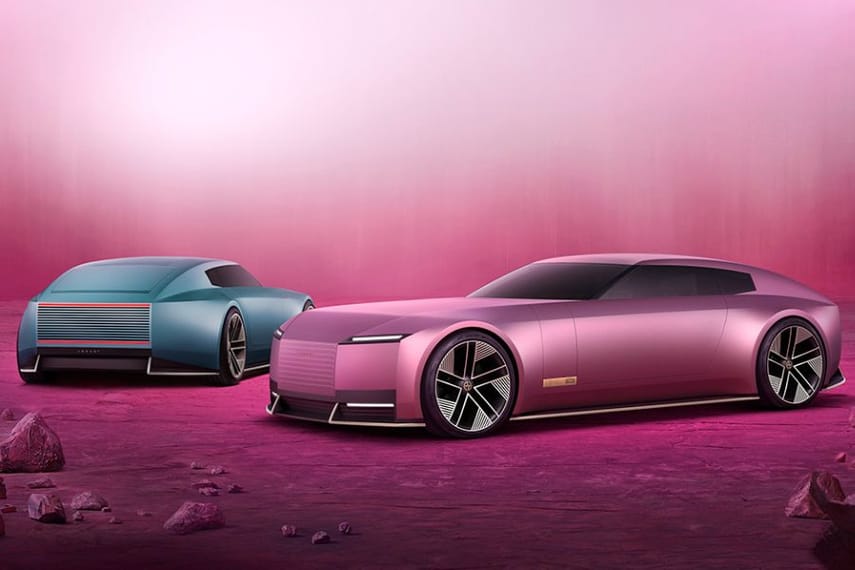
Jag’s gradient (!) nightmare
Jaguar recently abandoned their iconic "growler" logo and sleek, predatory aesthetic for something that looks like a tech startup. The response from their loyal customer base? Outrage.
When you're known for one thing and pivot to generic, you lose both—the customers who loved what you were, and the new customers who can't tell you apart from anyone else.
The pattern: Chasing marketing metrics while abandoning brand coherence creates a gap between the brand and the customers. The symptoms appear gradually, then suddenly.
The three symptoms of the taste gap
Symptom #1: Your brand becomes invisible
Your prospect saw your ad last week. Clicked it. Even visited your site. Downloaded your white paper. Today, when they're ready to buy, they can't remember your name. They Google the category and choose the competitor whose aesthetic they can picture. This is a brand recall collapse.
You paid for the attention.
But you didn't earn the memory.
The Institute of Practitioners in Advertising analyzed 996 campaigns over 10 years and found that brands with high creative consistency achieve 3x higher brand recall than those with low creative consistency.
Your dashboard shows the click. Your attribution model tracks the session. What neither shows: the 1,000 future purchases that won't happen because when it mattered most—in the moment of decision, weeks later—your prospect couldn't remember who you were. You're optimizing for attention. But attention without memory is a waste.
Symptom #2: You compete on price when you should compete on premium
Liquid Death sells water. Bottled water. The most commodified product on Earth. Chemically, it's identical to every other bottled water. They charge $1.99 per can. Store brand water costs $0.12. That's a 1,558% price premium for H₂O. The difference? Aesthetic coherence so extreme that people perceive it as a different category. It's not "water"—it's "Liquid Death." The skull logo, the punk rock aesthetic, the metal can, the absurdist marketing—it's so distinctive that price comparisons don't even register in the consumer's mind.
Motionpoint analyzed 150 consumer brands and found that brands in the top quartile for "aesthetic consistency" commanded average price premiums of 23% over the category baseline. Inconsistent brands? They compete on price. Because when you look like everyone else, price is the only differentiator left. You're racing to the bottom because you never built a case for charging a premium.
Symptom #3: You're losing money on acquisition
Pull up your CAC trend over the past three years. Notice how it keeps going up? You're blaming iOS privacy changes. Attribution breakdown. Increased competition. Rising CPMs. All false.
Brands with coherent aesthetics achieve 30% lower customer acquisition costs over time (Ehrenberg-Bass Institute, 2023). Why? Because brand memory compounds. When your brand looks different every week—because you're A/B testing aesthetics, chasing platform trends, adapting to each channel's "best practices"—every campaign starts from zero. No compounding. No equity. Just constant hustling for attention.
Your third touchpoint should be more effective than your first. But only if the audience remembers the first two. Only if they're building a coherent picture of who you are. You're paying the high-friction price because you never built the low-friction brand.
Here's the part that will piss people off
Let's say the quiet part out loud: most marketers don't actually have taste. Not because they're bad at their jobs. Not because they lack intelligence or creativity. But because they were systematically trained out of it.
You were hired to optimize funnels, not develop aesthetic judgment.
You were promoted for hitting MQL targets, not creating beautiful work.
You were taught to A/B test everything, which means you never committed to a point of view long enough to develop one.
You learned to speak in metrics, not in craft.
You learned to justify decisions with data, not with vision.
You learned that "I think this is more beautiful" is a career-limiting statement, but "this version improved CTR by 2.3%" gets you a promotion.
The system didn't want you to have taste.
It wanted you to have dashboards.
Go ahead—pull up your last performance review. How many times does it mention "brand coherence," or "aesthetic consistency," or "creative excellence"? Now count how many times it mentions "pipeline contribution," or "conversion rate," or "cost efficiency."
The good news? Taste is trainable.
It's not some mystical gift you're born with. It's pattern recognition, vocabulary, exposure, and practice. Think about how great taste is built in other domains:
Moving to Tuscany for a year to understand Renaissance art.
Spending weekends in museums studying how the masters used light and composition.
Reading voraciously across disciplines to build a mental library of references.
Apprenticing under someone who already has the eye you want to develop.
Taste is cultivated through intentional exposure to excellence, repeated practice at discernment, and the courage to develop and defend a point of view.
The bad news? Most marketing teams need to start from zero. And that's okay. Because your competitors are in the same boat. Those who train first will have an unfair advantage for the next decade.
The AI crossroads: Amplifier of everything
TLDR: The system is broken. We do the wrong things for the wrong incentives. And now we have AI that amplifies everything.
Let's clear up some things about AI first.
AI is going to change marketing as we know it because it allows us to produce content 100x faster with 10x less resources (people, time, money). With AI, knowledge becomes infinite and instant. That's why everyone is panicking.
The super quick history of knowledge:
Knowledge was available to most people long before the Internet. It was called books and formal education. You could go to a library, read, and learn from teachers. Knowledge existed, but access was limited by geography, economics, and time.
With the Internet, knowledge became available to everyone on an infinite scale. Wikipedia. YouTube tutorials. Online courses. The entire corpus of human knowledge, searchable and accessible with almost no barriers.
With AI, this entire system became not just available and infinite, but instant. All you need to do is ask, and the knowledge is presented to you. Explained. Contextualized. Personalized.
You don't need to search through ten articles to understand color theory—you ask, and AI explains it. You don't need to take a copywriting course—you ask AI to critique your copy and tell you why it's weak.
Now, this "knowledge" might not be accurate. It has flaws, hallucinations, and biases. But that's what knowledge has always been. Humans had to act as filters, curators, and judges of what's BS and what's not. That part hasn't changed. What HAS changed: the speed and accessibility of learning.
In marketing terms, AI is your all-rounder intern, your junior copywriter, your junior designer, your junior strategist. Today. In a year or two, it'll get promoted to mid-management or higher. Like it or not, we need to work with AI. Or others who work with it will pass us on the highway. It's that simple. But here lies the problem—and the opportunity.
The equation that determines your future
If everyone has access to infinite and instant knowledge, what determines who wins?
We know the system is broken.
We're chasing the wrong numbers.
We forgot how to build long-lasting stories.
We measure outcomes today rather than the promise of tomorrow.
We get incentives to repeat our broken processes.
So here's the question that will define the next decade of marketing:
Will we use AI to ship 100x more generic slop just to see our numbers go up? Or will we use AI to rediscover something long forgotten, finally?
Now that we no longer need to spend as much time on production, amplification, and operations—now that AI handles the execution—will we utilize that freed-up capacity to craft everlasting experiences, resonant stories, and brands & campaigns that we'll remember in 2045?
The equation is simple:
Weak taste × AI speed = exponential mediocrity
Strong taste × AI speed = exponential beauty
The tool is neutral. Your taste is the variable that determines whether you flood the world with forgettable content or craft the most memorable campaigns marketing has ever seen.
Think about the campaigns that stuck with you.
That overweight kid who ran slowly down a rural road with that perfect copy: "Find Your Greatness." Not some athlete. Not some aspirational figure. Just a regular kid, finding his version of greatness. That's Nike. That's resonance.
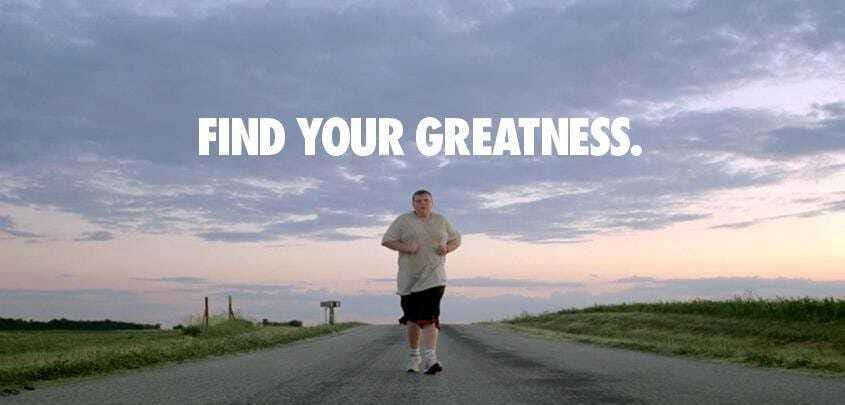
Robert Carlyle walking through the Scottish highlands telling the history of Johnnie Walker. "Keep Walking." Simple premise. Emotional execution. A seven-minute film that people watched 30 times. You remember it years later. That's craft.
That Levi's ad with the Walt Whitman poem set to beautiful cinematography. Jeans. But make it poetry. That's taste.
Volvo's "Made in Sweden" ad with Amanda Bergman's "Vintersaga" song. A seemingly boring wagon car sprinting with ease through the Swedish countryside. No features listed. No specs were rattled off. Just pure feeling. That's brand building.
Stop chasing the numbers. Let's do more like these. Numbers will come. Effortlessly. When you build something worth remembering.
The 60-Second Taste Test
Before we go further, do this diagnostic right now.
Pull up your last 20 pieces of content (any channel, any format)
Remove all logos and brand names
Show them to someone outside your organization
Ask two questions: "Can you tell these are from the same brand?" And: "Can you tell which brand this is?"
RESULTS:
✓ YES, clearly → You have taste worth scaling
~ MAYBE / Some of them → You're inconsistent (fixable)
✗ NO / They look random → Your brand is dissolving (urgent)
Be honest with yourself. Where did you land? If you're in the "NO" category—and most brands are—you have a taste gap. And every piece of content you ship with AI is widening it.
You have three choices
Let's be clear about what happens next. You have three paths:
Choice 1: Ignore this.
Keep optimizing for quarterly metrics. Keep testing into whatever converts today. Keep using AI to produce more of the same—faster, cheaper, at infinite scale. Watch your brand become less memorable, less distinctive, less valuable quarter over quarter. Watch your CAC climb while your brand recall declines. Watch your competitors who chose differently pull away.
Hope everyone makes the same mistake you're making. Hope taste doesn't actually matter. Hope the system rewards short-term metrics forever.
Most marketers will choose this path. Not because they're stupid, but because it's the path of least resistance. It's what the system rewards. It's what their incentives push them toward.
Choice 2: Acknowledge the problem but do nothing.
Nod along to everything in this article. Agree that taste matters. Send this to your team with a "thoughts?" message. Maybe even bring it up in a meeting. Then go back to your dashboard and optimize CTR because that's what you're measured on.
Tell yourself you'll focus on brand "when there's time," or "once we hit our targets," or "after this campaign." Watch the quarters turn into years. Watch the taste gap widen. Watch the window of opportunity close while you were waiting for permission.
Many marketers will choose this path. They see the problem. They just can't justify the solution within the current incentive structure.
Choice 3: Decide that taste is trainable—and train it.
Recognize that we're at an inflection point. The marketers who develop taste BEFORE deploying AI at scale will have an unfair advantage for the next decade.
Spend 90 days developing your eye. Use AI as your training partner, not your replacement. Build aesthetic literacy. Learn the vocabulary. Train your team. Then build the systems that scale judgment, not just output.
This is harder. It requires commitment. It requires defending decisions that don't immediately show up on the dashboard. It requires developing a skill most marketers were trained to ignore. But it's also the only path that leads somewhere new.
Most marketers will choose Option 1 or 2. That's why Option 3 is an unfair advantage.
What comes next in this series
In Part 2, we'll show you exactly how to train your taste using AI as your sparring partner. Not how to make things with AI—how to learn to SEE things with AI.
You'll get:
The deconstruction practice that trains your eye to see craft
The comparison method that builds your ability to discern quality from mediocrity
The reference collection process that helps you define YOUR aesthetic point of view (not best practices, but your principles)
The daily taste training that makes aesthetic judgment a habit
Specific AI prompts you can copy-paste and use immediately
This isn't theory. It's the 90-day transformation.
In Part 3, we'll show you how to build a taste-driven organization once your team has developed the eye.
How to scale judgment, not just output.
How to use AI to amplify taste, not chaos.
How to create systems that maintain aesthetic coherence even when you're shipping 100x more content.
In Part 4, we'll paint the picture of the Taste Economy—why the next decade belongs to curators, not just creators. Why taste will be the new competitive moat. And why the marketers who develop it first will capture disproportionate value.
The question isn't whether AI will change marketing. It will. The question is: will you use it to make more of the same forgettable shit that optimizes for this quarter's metrics? Or will you use it to develop taste—and make something worth remembering in 2045? But only if you're willing to put in the actual work.
Are you?
— Peter & Torsten

This edition was sponsored by:
Simplify Training with AI-Generated Video Guides
Simplify Training with AI-Generated Video Guides
Are you tired of repeating the same instructions to your team? Guidde revolutionizes how you document and share processes with AI-powered how-to videos.
Here’s how:
1️⃣ Instant Creation: Turn complex tasks into stunning step-by-step video guides in seconds.
2️⃣ Fully Automated: Capture workflows with a browser extension that generates visuals, voiceovers, and call-to-actions.
3️⃣ Seamless Sharing: Share or embed guides anywhere effortlessly.
The best part? The browser extension is 100% free.
Become a Pro member
Upgrade to get access to subscriber-only content.
Upgrade for $19/monthThe subscription gets you:
- Workshop library with prompts and transcripts
- AI CMO self-paced course
- Resource library with guides, frameworks, tools
- 1:1 AI marketing advisory call


